[Red Shift, BBC Micro]
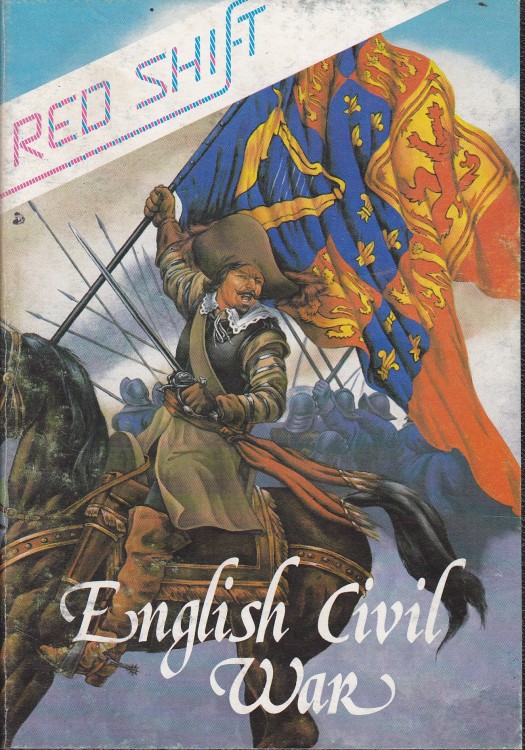
Verily, this be the hour of reckoning! The clash that shall bring an end to this wretched strife, and restore unto us the divine rights of our forebears. Here, upon this very field, do we make our final stand. All hinges upon this battle, and by God’s grace, we shall triumph.
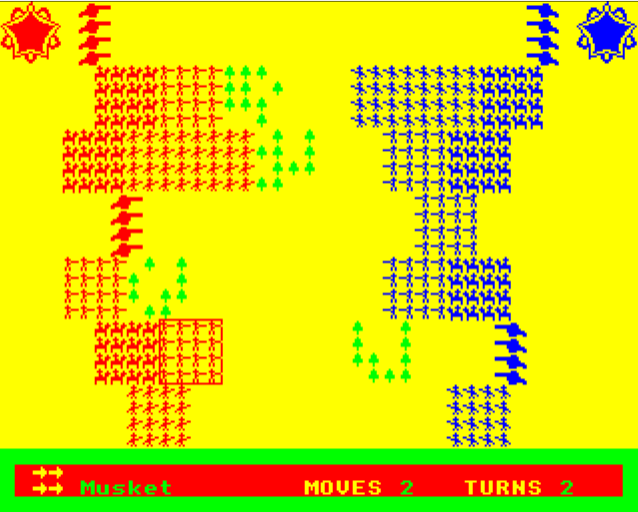
Those things in the corners are the forts. They don’t fight, and if you lose yours you lose the game.
The terrain, alas, is less open than one might desire, cluttered as it is by patches of forest. Neither the Roundheads nor we, the Loyal Party, could descry the disposition of the foe. Yet after consultation with our stalwart Prince Rupert, we resolved to deploy our brave musketeers in the centre of the field. The northern pass, we deemed, could be sealed shut with our cannon and pikemen, leaving our musketeers free to rain down hell upon any Parliamentarian fool enough to advance. To the south, our battery stands ready to reduce yonder trees to kindling, granting us freedom of movement. Behind our musketeers, our cavalry waits, ready to flood through any breach in the Parliamentarian line like a torrent.
Lord Snorker, the leader of the Parliament’s dishonourable forces, hath scattered his musketeers wide. His guns, however, deployed in the centre, present a danger. I may be forced to let loose my cavalry sooner than intended to deal with this threat.
The Roundheads move first and press their right flank forward. For now, I hold my forces in check.
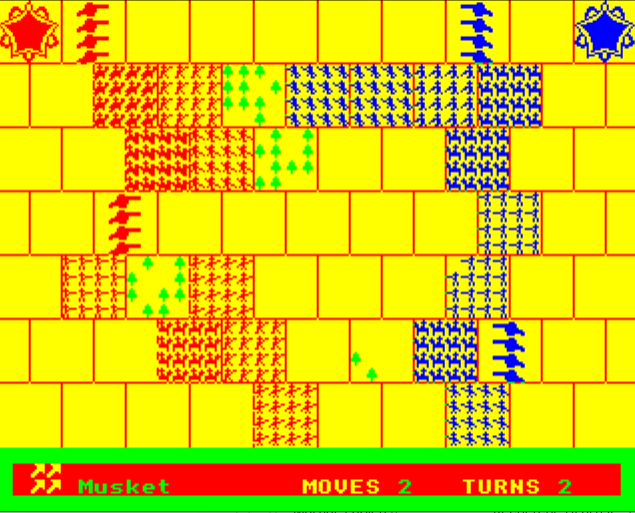
At last! Lord Snorker launches an assault on my right flank and begins a full advance in the centre, even bringing forward his guns. Pikemen on both sides lock in a brutal struggle. The moment is upon us—this is where victory shall be claimed!
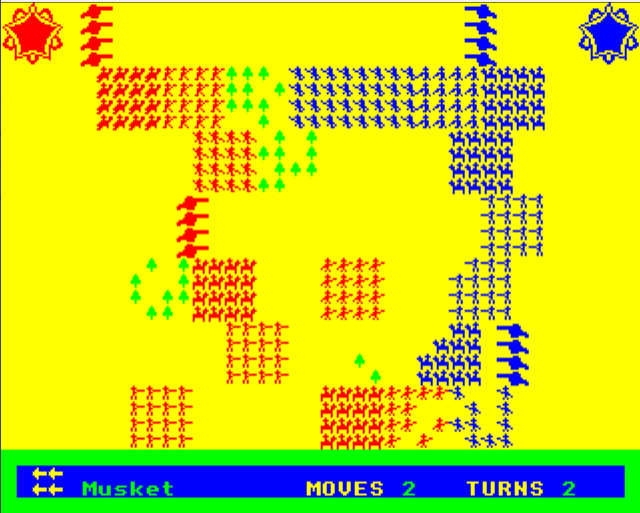
My musketeers draw near and unleash a withering hail of shots. Though many miss their mark at this range, even those scattered shots sometimes hit the masses cluttered behind their target.
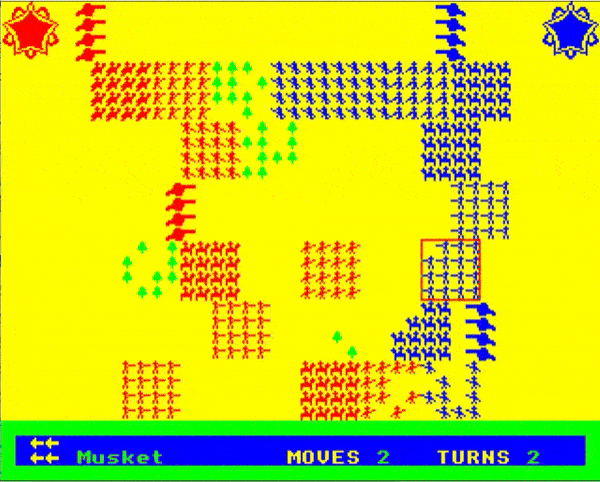
Meanwhile, Prince Rupert, bold as ever, leads a charge straight into the enemy guns, catching them unaware before they can fire a single shot!
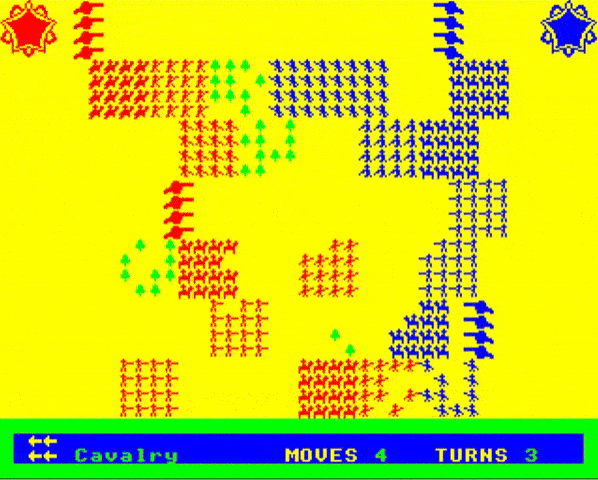
On the field, my musketeers continue their deadly work, raking the enemy pikemen with fire. A Parliamentarian square, once steadfast, is reduced to ruin.
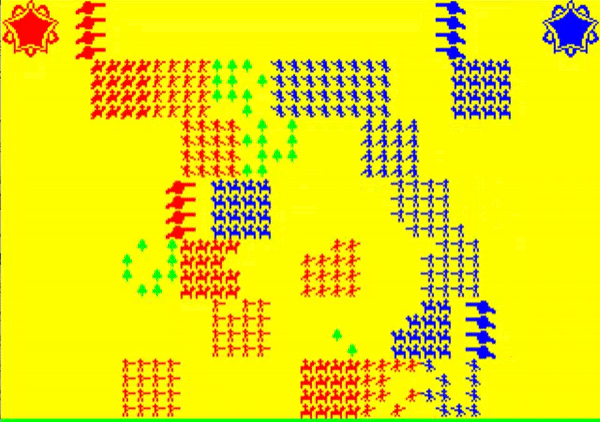
But alas! Even as Prince Rupert’s cavalry doth ride with valor, it is repulsed by the sheer might of the Parliamentarian centre.
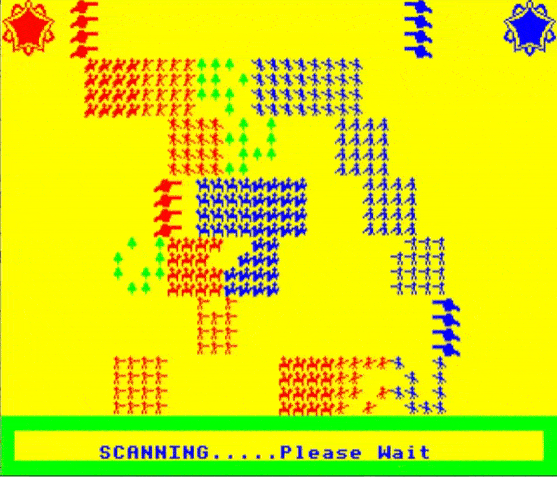
Worse still, the enemy redoubles their efforts on my left, shattering much of my artillery in their relentless advance.
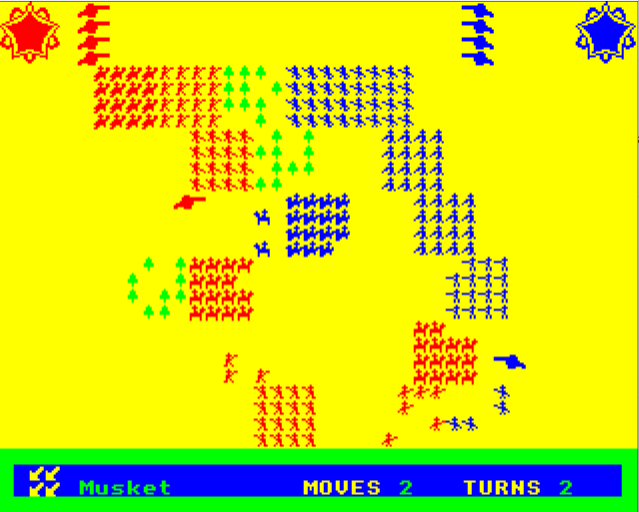
Yet Rupert’s sharp eye sees an opportunity amid the chaos. Some Parliamentarian musketeers, to support their brothers in betrayal, had started a lateral movement. At once, Rupert’s cavalry pounces, striking them from behind and scattering them to the winds. Meanwhile, my musketeers, at close range, break the Roundhead attack upon the left with devastating volleys.
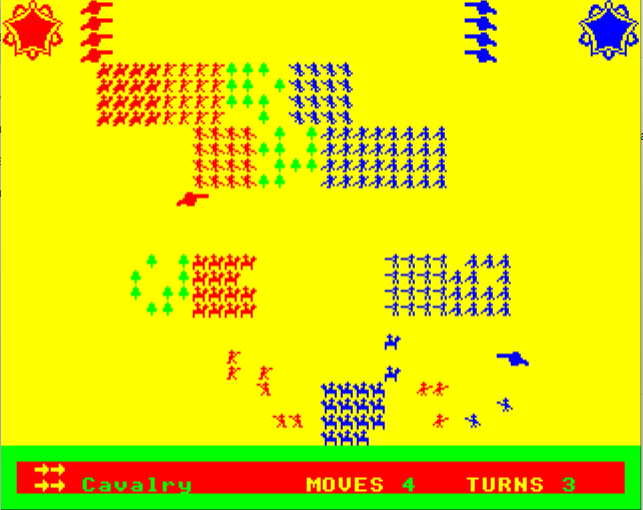
The Roundhead cavalry, desperate, attempts another charge…
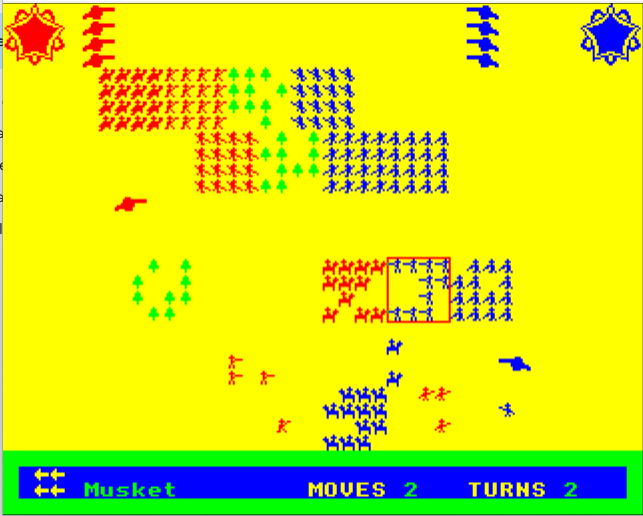
… but they are broken like waves upon a rock. Lord Snorker’s army falters.
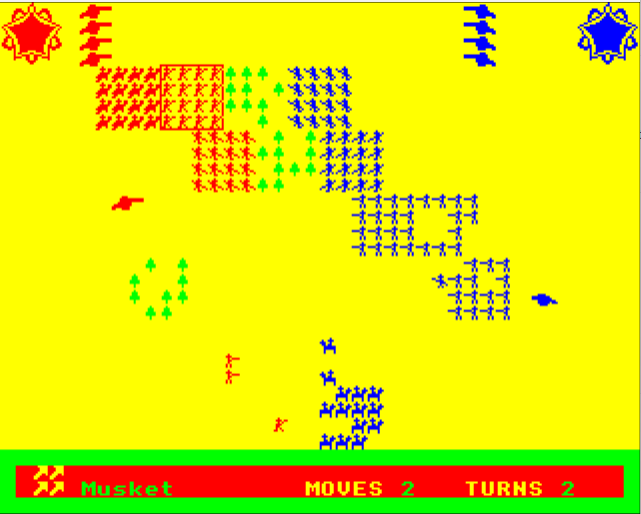
Now, the Loyalists, regrouped and emboldened, prepare for the final blow. We launch our assault with renewed fervor, sweeping over the field like a storm.
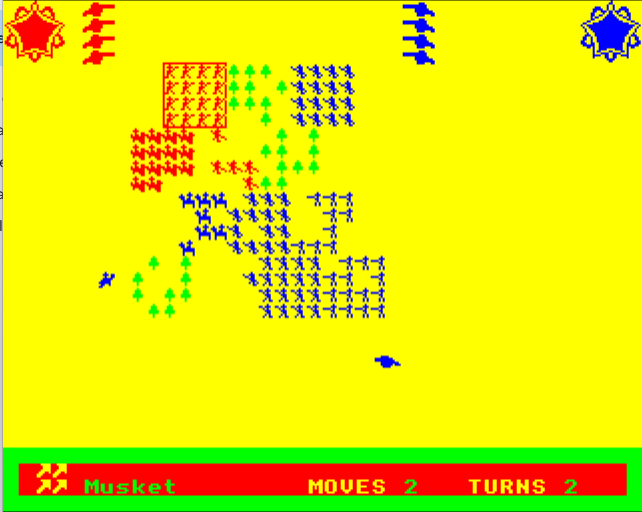
As the Parliament scrambles to shift its guns to stem the tide, my pikemen seize the moment, flanking what remains of Lord Snorker’s forces.
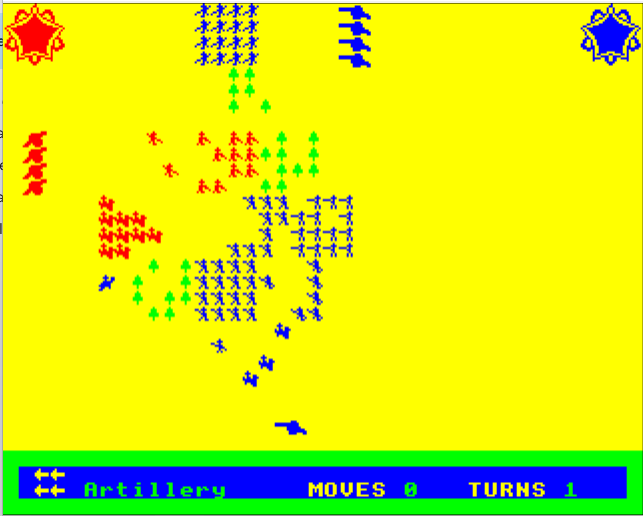
And thus, the Parliamentarians are routed utterly, their cause in shambles. Victory, by God’s grace, is ours!
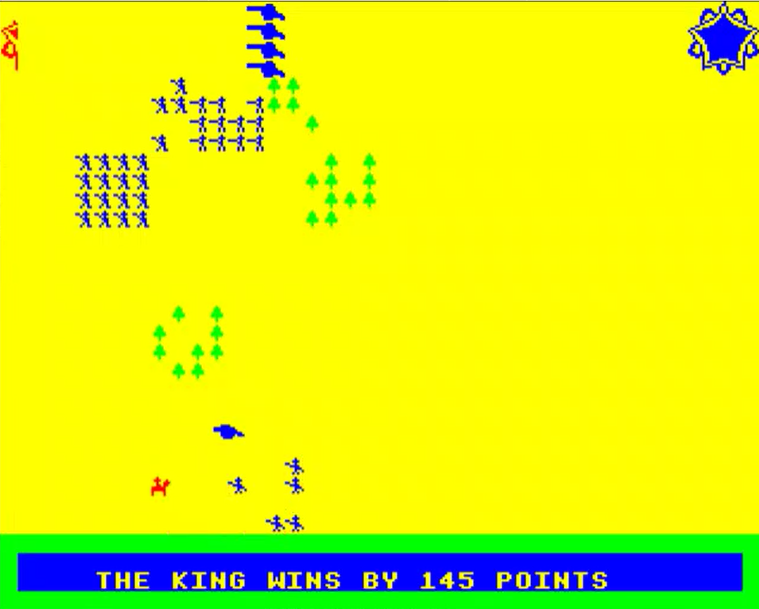
Rating & Review

English Civil War by Joe Sherwood-Taylor, published by Red Shift, UK
First release: November 1984 latest on BBC Micro
Genre: Battlefield Tactics
Average duration of a campaign : 30 minutes for two players,
Total time played: 2 hours
Complexity: Low (1/5)
Rating: Two stars
Ranking at the time of review: 33/142
Context – The short-lived Red Shift has been a regular of this blog, but reading about the company you feel a disconnection between how it is described – a large video game company teeming with creative developers – and its actual output: an Apocalypse port, its scenario disks and a bunch of games all developed by Julian Gollop: Time Lords, Nebula, Islandia and of course Rebelstar Raiders. If you read my blog, you probably wonder what all the other devs were doing, and to be honest I do, too. Before everyone left for the SLUG cooperative, the non-Gollop devs only released:
- two computer-assisted boardgames (Murderball [1983] and The First Empire [1984]),
- Shiva Inferno [1983], an early ZX81/Spectrum title advertised only once and described thus: “Anarchy is rampant in Europe as the forces of chaos collide in titanic proportions. For the post-cruise generation on the pre-cruise computer.” Yes, the second sentence lacks a verb.
- City of Death [1984], a short Spectrum “RPG” that did not impress the Addict,
- Finally, today’s topic: the BBC Micro exclusive English Civil War, the only bonafide other wargame that survived to this day.
Even then, Joe Sherwood-Taylor, the author of English Civil War, does not seem to have been a Red Shift insider: you can’t find his name in the extensive credits of the other Red Shift game, and – tellingly – he is not a character in Rebelstar Raiders. He may have used a pseudonym within Red Shift, of course, but Joe Sherwood-Taylor is a real name, as he is credited as the author of XO Words and Anagram published by Azed Software 1986 – he does not seem to have worked on any other game. Given City of Death was not done by any Red Shift insider either, the question of “what the heck was everyone in Red Shift doing” remains open.
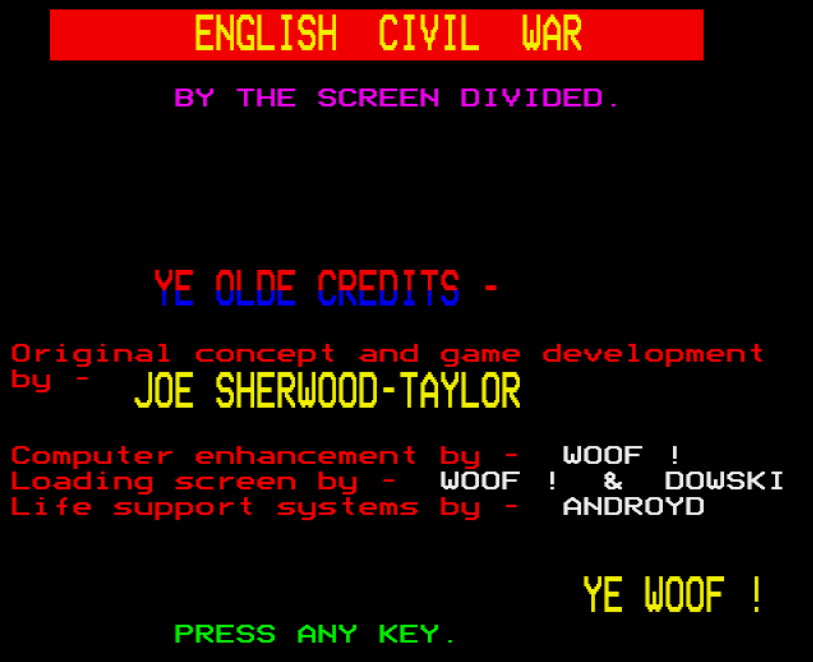
Traits – English Civil War is, by all accounts, a minor title that I can’t even describe as “forgotten” as it was barely noticed on release. It is a two-player game on a niche topic and does not offer much in terms of customization either (the players can choose the number of trees and their army composition among 3 possible – but both sides must use the same one). As a representation of the English Civil War, or 17th century warfare in general, it is terrible: musketeers can move backwards and shoot even if engaged in melee against cavalry, pikemen actively stab one another instead of just “locking” one another and there is no such thing as morale: units fight until the last man.
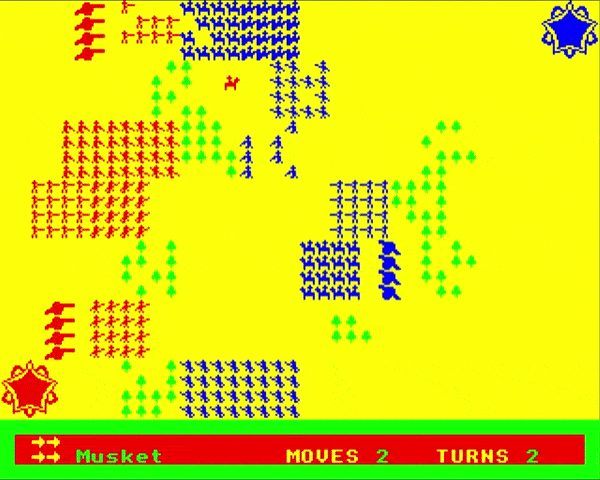
However, by other aspects, English Civil War is a surprisingly modern game. It is the first wargame that represents losses visually by removing actual men from the screen and it is one of the very few games (with Rebelstar Raiders) that tracks shots individually to check if a missed bullet hit someone else (including a friendly soldier). Thanks to its very simple ruleset (each unit has every turn a limit on the number of turnings and actions, either movement or ranged attacks, it can do), you can pick it up and understand it immediately. There is only one significant “bonus” to know about, also intuitive: attacks from the side or from the back receiving a massive bonus. As the game does not track morale, ammo, etc and always shows how many soldiers/guns are on the battlefield, English Civil War does not need any side menu that takes you off from the main view – what you see is what you have! English Civil War is well-coded, it is smooth, its rules are unrealistic, but organic. It’s not very deep, but boy is it polished!
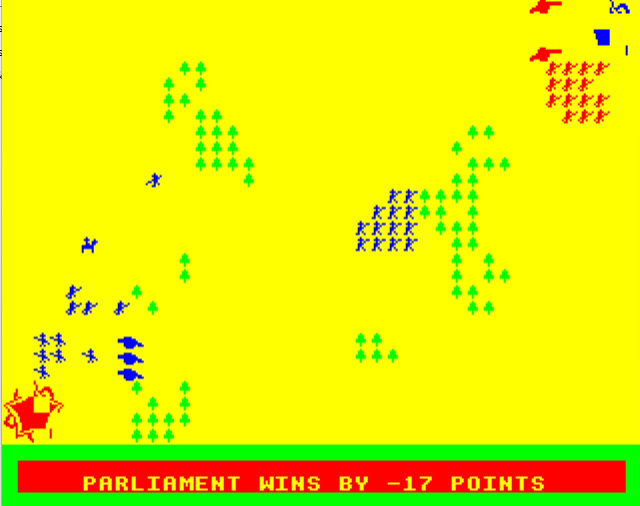
Did I make interesting decisions? Yes, every turn. Battles are short, combats are decisive and out-of-position units will die quickly.
Final rating: Two-stars. English Civil War is not really showcasing English Civil War battles, but it is still a well-thought game with which I had real, honest fun in the 3 battles I played. This is enough to propel this game in my top quartile, but not above: with no computer opponents and so few options, the game is soon repetitive and I would not be willing to play it a fourth time.
Reception
The name English Civil War for this product was a marketing blunder: such a name was sure to only interest a minority of players, who would of course be turned off by the lack of realism of the game. The relative lack of advertisement did not help either, and as I said the game went unnoticed: the only review I could find was penned by Ivor Benstead in the December 1984 issue of Micro-Adventurer. Not only did Benstead expect an English Civil War game instead of whatever English Civil War represents, but he also found the game quite simply boring: “Every game degenerated into a mindless slog after the first move.” However, Benstead shares my view on the technical achievement, concluding: “Technically it is very competent, and does what it sets out to do. It’s also very pleasant to look at. But challenging or interesting (to a seasoned gamer) it’s not.“
I will stay in the UK a bit for the next article, and I ponder whether I should spread the next SSI game (Breakthrough in the Ardennes) in one large article à la Reforger ’88, or in many small ones “as I go along”. If you have an opinion on the matter, I am looking forward reading it.
2 Comments
If it doesn’t matter to you either way, I’d vote for a single large article. Don’t get me wrong, it’s always a treat when I get an RSS feed notification about your article, but I just have a general preference for longer-form texts, I guess? 🙂
This does indeed sound like giving it more generic window dressing and a way to mix up army composition a bit more could have made the game… Not necessarily better, but with much better commercial prospects, at least?
Until I saw the bit at the end where you said that there is no AI for the game, I assumed you either got very lucky or the AI wasn’t that good. I’m not sure what that says about WhatHoSnorkers abilities, but it’s still better than mine.
I think it was a shame this game wasn’t better, because this era of always felt underused to me, especially something in Britain. There’s a lot you could do with Renaissance-era Britain, even if this is a little later, and nobody ever does.